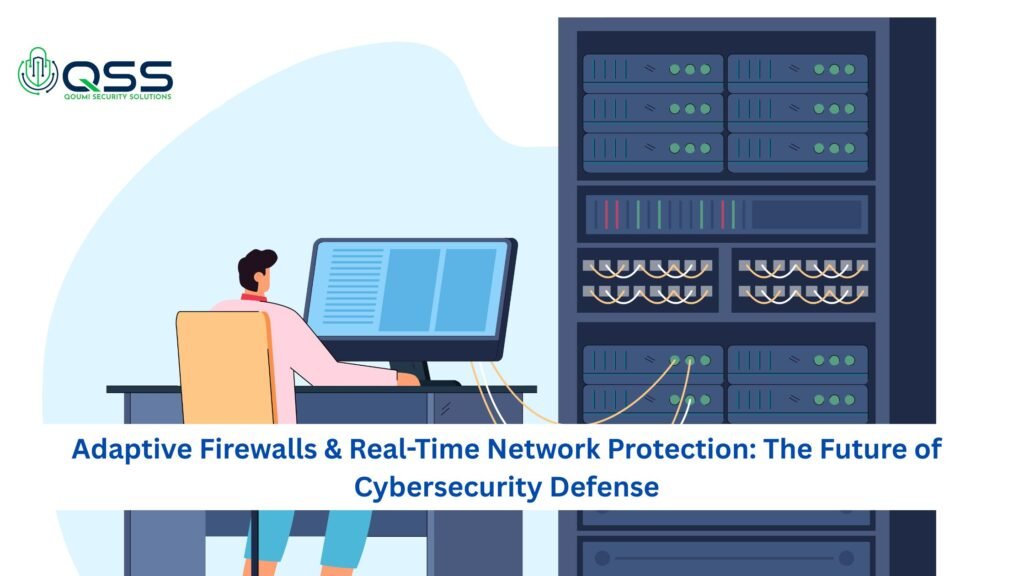Single Blog
Physical vs. Digital Red Teaming: Which Poses the Greater Risk to Your Business?
Physical vs. Digital Red Teaming: Which Poses the Greater Risk to Your Business?

Cyber threats and physical intrusions evolve rapidly, exploiting vulnerabilities at every turn. Red teaming—simulating real-world attacks to test defenses—has become essential for identifying weaknesses before adversaries strike. But which type of red teaming, physical or digital, exposes your organization to greater risk if left untested? Both uncover critical gaps, yet their impacts vary based on your operations, assets, and threat landscape. With global cybercrime costs projected to reach $10.5 trillion annually by 2025, per Cybersecurity Ventures, and physical breaches causing millions in losses, understanding these risks is critical.
This blog examines physical and digital red teaming, compares their risks, illustrates real-world consequences, and provides practical steps to prioritize defenses. By exploring both approaches, you’ll gain clarity on which vulnerabilities demand immediate attention to safeguard your business.
What Is Red Teaming? Defining Physical and Digital Approaches
Red teaming replicates attacker tactics to expose security flaws. Physical red teaming tests tangible defenses—locks, cameras, access controls—through simulated intrusions like tailgating, badge cloning, or dumpster diving. Digital red teaming targets IT systems, probing networks, applications, and endpoints for vulnerabilities such as unpatched software, weak credentials, or misconfigured APIs.
Physical red teaming might involve operatives posing as delivery personnel to access restricted areas, while digital efforts could include spear-phishing campaigns or exploiting cloud vulnerabilities. Both approaches aim to mimic real adversaries, revealing how easily defenses can be bypassed. The key difference lies in their execution and impact, with physical breaches often causing immediate, visible damage and digital attacks enabling stealthy, widespread harm.
The Risk Profile of Physical Red Teaming
Physical breaches exploit human and environmental weaknesses. An unlocked door, a distracted security guard, or an unmonitored loading dock can grant attackers access to sensitive areas. The consequences are direct: stolen equipment, compromised documents, or even physical harm. A 2018 incident at a major retailer saw thieves bypass weak perimeter security to steal $2 million in inventory, highlighting the cost of physical lapses.
Physical risks escalate in industries with high-value assets or sensitive facilities, such as manufacturing, healthcare, or finance. Unsecured server rooms can lead to data theft, while compromised executive offices may expose trade secrets. Human error amplifies these risks—Verizon’s 2023 Data Breach Investigations Report notes that 74% of breaches involve human elements, such as employees falling for social engineering tactics like impersonation.
Physical breaches also carry reputational and regulatory consequences. A hospital losing patient records due to an unsecured file room faces HIPAA violations, with fines up to $1.5 million per incident. Moreover, physical incidents disrupt operations immediately, halting production or delaying shipments. Without regular physical red teaming, businesses remain blind to these vulnerabilities, assuming locks and cameras suffice.
The Risk Profile of Digital Red Teaming
Digital red teaming uncovers vulnerabilities in IT ecosystems, where a single flaw can cascade into catastrophic breaches. Attackers exploit weak passwords, unpatched systems, or misconfigured cloud settings to gain footholds. The 2020 SolarWinds attack, where hackers infiltrated networks via a compromised software update, affected thousands of organizations, showing the scale of digital risks.
Digital attacks are stealthy, often remaining undetected for months. IBM’s 2025 report estimates average breach detection takes 204 days, allowing attackers to exfiltrate data, deploy ransomware, or disrupt operations. The financial impact is staggering—average breach costs reach $4.45 million, with 60% of small businesses closing within six months of a major cyberattack, per the U.S. National Cybersecurity Alliance.
Digital risks are amplified by modern trends. Remote work, cloud adoption, and IoT devices expand attack surfaces. A single phishing email can compromise credentials, granting access to entire networks. Regulatory penalties, like GDPR fines reaching €20 million or 4% of annual revenue, add pressure. Digital red teaming reveals these gaps, testing defenses against phishing, malware, and API exploits, ensuring businesses stay ahead of evolving threats.
Comparing the Risks: Physical vs. Digital
Which poses the greater risk? The answer depends on your business’s context, but both demand attention. Physical breaches deliver immediate, visible damage—stolen assets or disrupted operations hit revenue and reputation instantly. A logistics firm losing cargo to a physical breach faces supply chain chaos, while a data center breach risks hardware theft and downtime.
Digital breaches, however, often have broader, longer-lasting impacts. A single compromised endpoint can lead to network-wide ransomware, affecting global operations. The 2021 Colonial Pipeline attack disrupted fuel supply across the U.S., costing millions and eroding public trust. Digital attacks also scale rapidly—stolen data can be sold on the dark web, fueling further attacks.
Likelihood and ease of execution differ too. Physical attacks require proximity, planning, and sometimes insider knowledge, making them less frequent but highly targeted. Digital attacks are remote, scalable, and often automated, with 3.4 billion phishing emails sent daily, per 2023 industry reports. However, physical breaches exploit universal human weaknesses, like tailgating, which require less technical skill than hacking.
Criticality of assets matters. A financial firm’s server room breach risks sensitive data, while a retailer’s e-commerce platform hack threatens revenue. Hybrid threats blur the lines—physical access to a device can enable digital intrusion, as seen in the 2019 Capital One breach, where a misconfigured server was exploited remotely after initial physical access.
Ultimately, risk hinges on exposure. Businesses with physical assets—like warehouses or R&D labs—face higher physical risks. Those reliant on digital infrastructure—e-commerce or SaaS firms—face greater digital threats. Most organizations face both, making integrated red teaming essential.
Real-World Impacts: Lessons from Physical and Digital Breaches
Real-world cases highlight the stakes. A pharmaceutical company suffered a physical breach when attackers posed as maintenance workers, stealing prototype samples from a lab. The loss delayed product launches, costing $10 million in revenue. Physical red teaming could have exposed weak badge checks, preventing the incident.
Conversely, a mid-sized law firm faced a digital breach after a phishing email compromised an employee’s credentials. Hackers accessed client records, triggering a $1.2 million ransom demand and regulatory scrutiny. Digital red teaming later revealed weak email filters, enabling the firm to bolster defenses.
Hybrid scenarios are equally telling. A tech startup suffered when an attacker tailgated into its office, plugged a malicious USB into a workstation, and deployed malware. The breach disrupted operations for weeks, costing $500,000 in recovery. Combined physical and digital red teaming could have identified both the access control lapse and the endpoint vulnerability.
These examples underscore a truth: untested defenses invite exploitation. Physical and digital red teaming provide actionable insights, turning potential crises into manageable fixes.
Prioritizing Defenses: Practical Steps for Red Teaming
To mitigate risks, businesses must integrate both physical and digital red teaming. Start with a risk assessment. Map critical assets—physical (facilities, equipment) and digital (servers, customer data)—to identify high-value targets. Evaluate exposure based on industry, size, and operations.
For physical red teaming, test access controls, surveillance, and employee awareness. Simulate tailgating, badge cloning, or after-hours entries to gauge weaknesses. Train staff on social engineering tactics, as 90% of physical breaches exploit human error, per industry studies. Upgrade physical defenses—biometric locks, 24/7 monitoring—based on findings.
For digital red teaming, conduct penetration tests, phishing simulations, and cloud security assessments. Prioritize endpoints, as 70% of breaches originate there, per Microsoft’s 2023 report. Patch systems regularly, enforce multi-factor authentication, and use behavioral analytics to detect anomalies.
Integrate findings into a unified strategy. Hybrid threats require coordinated defenses—secure physical devices to prevent digital entry points. Conduct red team exercises quarterly, simulating real-world scenarios. Track metrics like breach detection time and response effectiveness to measure progress.
Budget strategically. Start with high-risk areas, scaling as resources allow. Managed red teaming services offer expertise without in-house overhead. Engage stakeholders with ROI projections—red teaming costs far less than breach recovery.
Overcoming Challenges in Red Teaming Adoption
Adoption faces hurdles. Cost is a concern, but breaches cost more—$4.45 million for digital, millions for physical losses. Justify investment with risk assessments showing potential savings. Resistance from staff, wary of simulated attacks, can be mitigated through clear communication about improving safety.
Complexity is another challenge. Coordinating physical and digital tests requires expertise. Partner with experienced providers to streamline efforts. Finally, address alert fatigue in digital red teaming by prioritizing high-risk alerts and automating routine checks.
Conclusion: Balancing Physical and Digital Defenses
Neither physical nor digital red teaming inherently poses greater risk—both expose critical vulnerabilities that adversaries exploit. Physical breaches cause immediate, tangible harm, while digital attacks scale rapidly with long-term consequences. The greatest risk lies in neglecting either. Integrated red teaming ensures comprehensive protection, aligning defenses with your business’s unique needs.
Quomi Security specializes in tailored red teaming solutions, combining physical and digital expertise to fortify your defenses. Don’t wait for a breach to reveal weaknesses. Contact Quomi Security today to assess vulnerabilities and deploy proactive testing. In a world of relentless threats, preparedness is your strongest asset.




